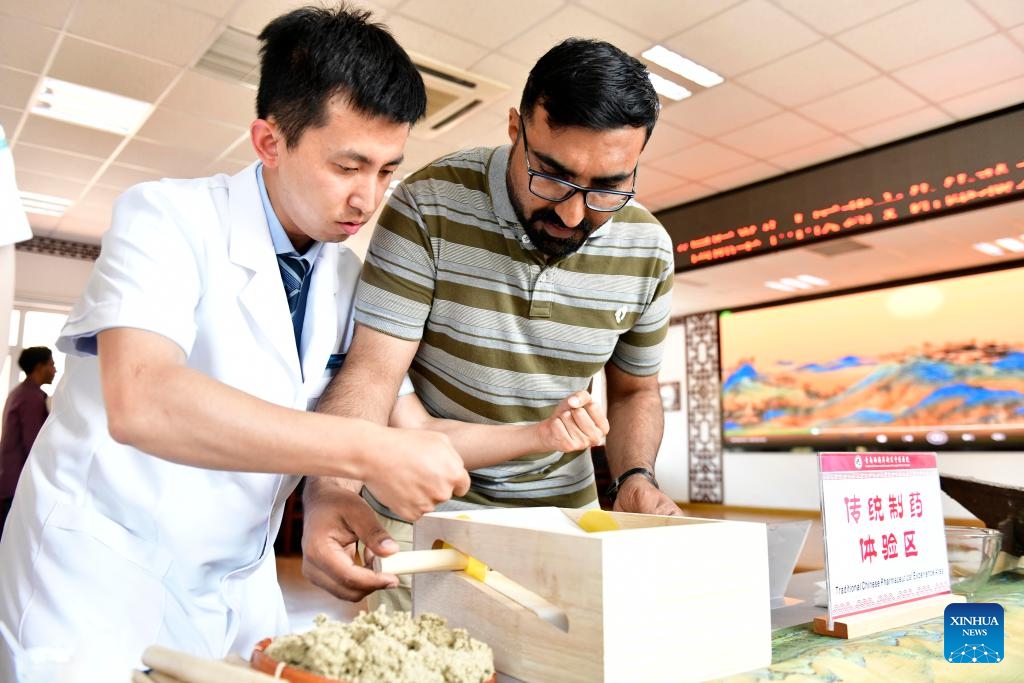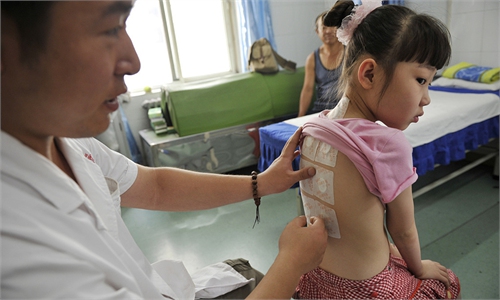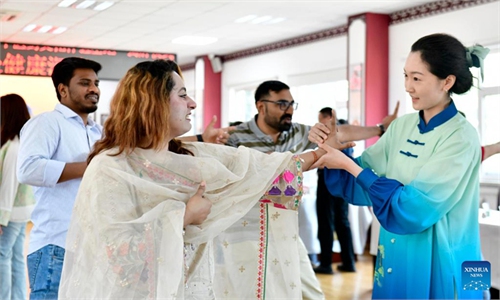
An international student from Qingdao University (R) learns the art of crafting moxa sticks used in moxibustion at a traditional Chinese medicine (TCM) hospital in Qingdao, East China's Shandong Province, June 18, 2024. Photo: Xinhua
To advance the modernization and industrialization of traditional Chinese medicine (TCM) and facilitate its going global, the National Administration of Traditional Chinese Medicine (NATCM) on Wednesday released a three-year campaign to further standardize TCM so as to better serve the high-quality development of the industry.
The initiative, announced by the NATCM on Wednesday, deployed 20 detailed tasks and 25 area-oriented missions, Xinhua News Agency reported.
The initiative adopts a demand-oriented perspective, formulating 20 guidelines governing health interventions for key groups, including the elderly, children and teenagers, and strengthening the TCM standards in key areas to meet the people’s health needs in the new era.
Meanwhile, the plan calls for finalizing the establishment of 30 international and 180 domestic TCM standards.
It calls for the acceleration of integration between TCM standards and artificial intelligence, and conducting of experimental projects like digitizing standards.
NATCM suggests that information on TCM standards should be made available for the public through various means like publishing manuals, which will guarantee the implementation of TCM.
Xinhua quoted an NATCM official as saying that driving the high-quality development of TCM standardization contributes to the efforts in delivering safe, effective and convenient services to the people, benefiting the academic progress, and boosting TCM exchanges and cooperation of TCM with foreign countries.
TCM standards are the prerequisite for going global, and the international standardization of TCM will make a significant contribution to resolving problems currently hold back TCM’s development overseas, according to an expert renowned in TCM field.
The dean of the LKS Faculty of Medicine of the University of Hong Kong, professor Feng Yibin, emphasized that despite the fact that the TCM research is now more readily available, quality control and standardization remain crucial for TCM to be broadly recognized by both local and international markets, according to the 21st Century Economic Report.
A total of 196 nations and regions have started using TCM, according to NATCM statistics, and more than 40 foreign governments, regional authorities, and international organizations have signed specific TCM cooperation agreements with China, China Central Television (CCTV) reported in May.
TCM has now become an essential field of cooperation between China and mechanisms such as ASEAN, the European Union, and the Shanghai Cooperation Organization, the CCTV report noted.
Ten industry standards and 77 nationally approved standards for TCM have been developed by China to date. In addition, 112 international standards for TCM have been released by the Technical Committee on Chinese Medicine of the International Organization for Standardization (ISO), according to Xinhua.
These standards represent that the framework of the standard system tailored for the development of TCM in China has been fundamentally established, NATCM said.
Global Times


